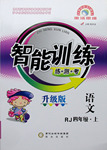题目内容
根据下面短文内容,在短文的空格处填上一个恰当的词,使短文完整、通顺。
Do you often like to use disposable (一次性的) chopsticks when 1. in restaurants? It’s time to drop this habit.
China produces 80 billion pairs of disposable chopsticks every year. “This is enough to cover Tian’anmen Square 363 times,” said Bai Guangxin, chairman of Jilin Forest Industry Group.
“The production of such chopsticks is a heavy burden (负担) on national forests,” Bai added. People need to cut 2. over 20 million 20-year-old trees to make way for this production.
Many people choose to use disposable chopsticks 3. they think that they are cleaner. However, many disposable chopsticks are not as 4. as people think. Some may even be toxic (有毒的), China Daily reported.
Several days ago, actor Huang Bo posted a message on his micro blog. He wrote that when he tried to wash the disposable chopsticks in a restaurant, he was 5. to find that the chopsticks turned the water yellow and gave off a bad smell.
Some scientists said the color and 6. of the chopsticks may show that they have something harmful such as sulphur (硫磺) and other chemicals (化学品). That’s bad 7. people’s health.
As Bai Guangxin suggested, it’s better that people carry their own chopsticks around. It doesn’t just help save the environment; it also 8. our own health.
1.eating
2.down
3.because
4.clean
5.surprised
6.smell
7.for
8.saves/protects
【解析】
试题分析:这篇短文主要描述了中国实用一次性筷子的情况,并通过演员黄渤的一条微博告诉我们,我们所使用的一次性筷子并不像我们想象的那样干净,甚至还危害我们的健康。因此,为了保护中国的环境以及我们的身体健康,要减少使用一次性筷子。
1.联系下文,可知此处指的是在饭店吃饭时,现在分词作状语表示正在进行的伴随性动作,结合语境可知填现在分词eating,吃饭。
2.联系下文,可知此处指的是砍倒树木,故填down,向下。
3.句意:许多人选择用一次性筷子,因为他们认为他们是更清洁的。故填连词because,因为。
4.联系上文,可知此处指的是并不像他们想的那样干净。As后一般用形容词原级,故填形容词clean,干净的。
5.联系下文,可知这是一个很吃惊的结果,故填形容词surprised,惊讶的。
6.联系上文,可知此处指的是一次性筷子的颜色和气味,故填smell,气味。
7.句意:拿对人们的健康有害。Be bad for 对……有害,后接名词。故填介词for,为了,对于。
8.结合语境可知此处指的是保护我们的健康。描述客观性动作用一般现在时态,主语it是单数第三人称,故谓语动词用单数,填saves/protects,拯救/保护。
考点:短文中词汇短语的运用能力
点评:本题难度较大,由于给出的关键信息较少,只能根据文章前后句子之间意思推断出词义,判断出所缺单词,然后根据该单词在句子中的句子成分,所起作用,确定单词词形,进行适当词形变化。书写答案时,注意首字母大写。注意此类题型由于没有限定答案,故答案可能不唯一,注意选择能使上下文语义通顺的最佳答案。

 智能训练练测考系列答案
智能训练练测考系列答案A)根据下面短文内容,在文章后小题的空格里填入适当的词语,
注意:每空一词。
Different cultures make different families. For example, there are differences in the way Chinese and Americans raise children.
First, Chinese and American families have different attitudes towards independence (独立). Each Chinese child has been considered to be the apple of parents’ eyes. It is not surprising to see Chinese parents always helping their children with getting dressed, having meals, bathing, and other things. American parents, on the other hand, teach their children how to do things alone from childhood.
Second, most Chinese parents often make their children have extra classes, such as piano, drawing, or singing lessons. Parents want their children to develop in an all-round way and be better students than other children. The problem is that their children may not be interested in these classes. American parents try to respect (尊重) their children’s interests and usually don’t make them do what they don’t like.
Third, there is a difference in the way parents in China and American treat mistakes that children make. Many Chinese people believe in the saying, “Spare the rod, spoil the child (不打不成器).” When Chinese parents see their children make mistakes, they often get very angry, some even hit them instead of making them realize their mistakes. This affects the children’s growth and the forming of their character, and also makes the generations gap (代沟) wide. American parents think it is common for people to make mistakes because mistakes are a part of life. They often say, “It’s OK to make mistakes. Making mistakes helps you learn.” They help their children deal with mistakes by giving them ideas about how to turn mistakes into learning opportunities (机会).
Families in China and America are quite different, and one way may seem better than the other, but it is better to think about whether the parents fit the family or not instead of talking about which one is wrong or right.
|
Comparisons |
Differences |
|
Different attitudes towards independence |
Chinese parents always try to do almost 1 for their children. |
|
American parents try to let their children 2 with things on their own from childhood. |
|
|
Different ways of treating children’s 3 . |
Chinese children are often made to go to 4 classes. |
|
American children are usually encouraged to do what they 5 . |
|
|
Different ways of treating children’s mistakes |
Chinese parents are 6 about children’s mistakes and often 7 them. |
|
American parents think everyone can make mistakes and they are a good 8 to learn. |
|
|
The author’s 9 |
|
|
Parenting styles should depend on what is 10 for the family. |
 Our eyes are very important to us. They are like cameras. We can see beautiful things and colors around us.
Our eyes are very important to us. They are like cameras. We can see beautiful things and colors around us.